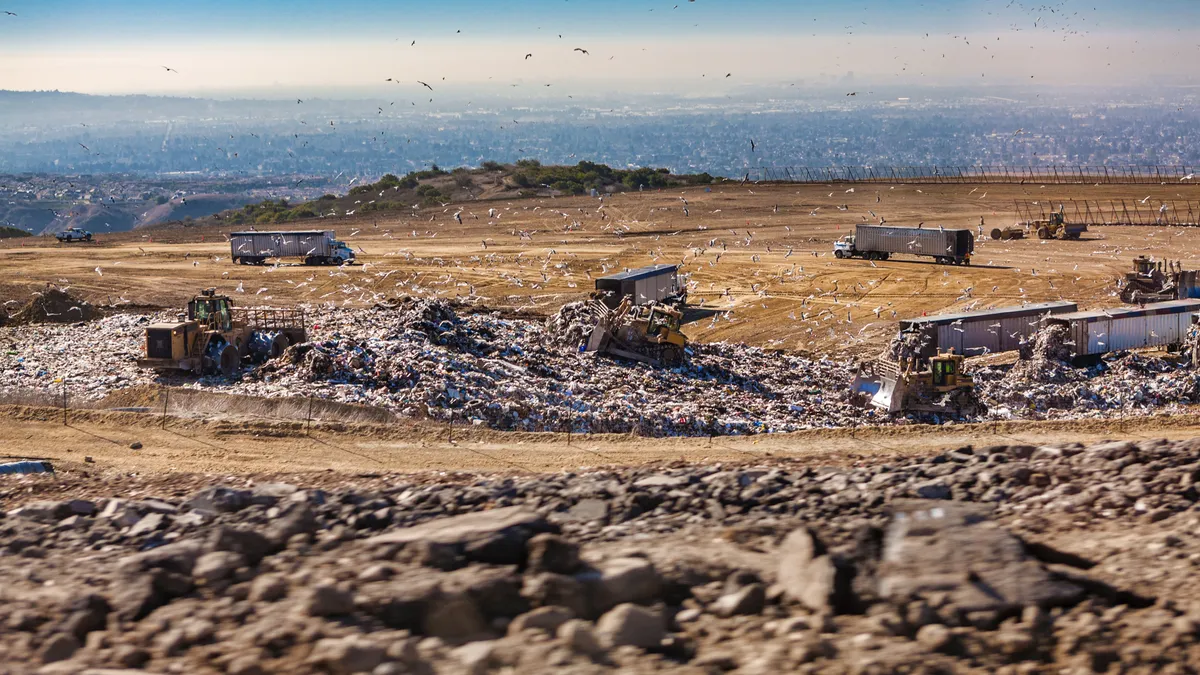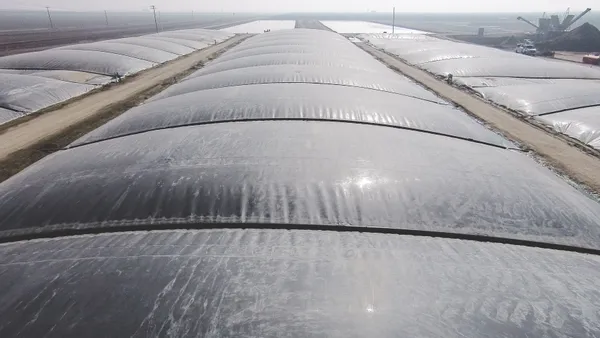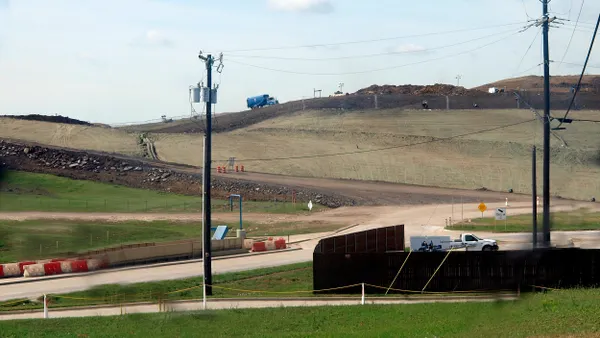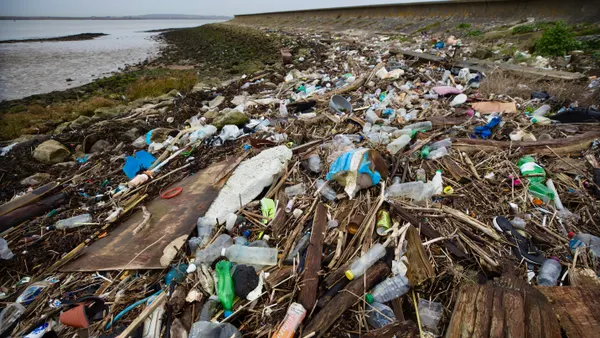Dive Brief:
- A federal interagency working group released a strategy in November calling for cross-government collaboration to improve methods of tracking and monitoring greenhouse gas emissions from landfills. The strategy also directs federal agencies including the EPA to continue supporting development of cost-effective measurement and monitoring approaches for the emissions.
- As part of the strategy, the National Institute of Standards and Technology also plans to coordinate with the U.S. EPA, NASA and the National Oceanic and Atmospheric Administration to establish a multi-year, multi-landfill "measurement test bed initiative" to research the effects of weather and other factors on emissions.
- The initiative will work with landfills in the Washington, D.C., and Baltimore corridor. The working group anticipates that using insights from that initiative and others will allow it to improve emissions modeling.
Dive Insight:
The National Strategy to Advance an Integrated U.S. Greenhouse Gas Measurement, Monitoring, and Information System is meant to bring industries together into a more comprehensive system of tracking emissions across the federal government, according to a press release announcing the document. It comes on the heels of the Fifth National Climate Assessment released by the Biden administration in November and follows the U.S. Methane Emissions Reduction Action Plan released in 2021.
The new strategy was a welcome move for many who track landfill emissions that have long considered the EPA’s models out of date. It recognizes that current walking survey surface emission measurement practices are “not able to detect all anomalous emissions at a landfill,” and notes there are fault points like flooded landfill gas collection wells that could lead to undetected emission plumes.
Katherine Blauvelt, circular economy campaign director at industrial climate solutions group Industrious Labs, said the strategy is the closest the federal government has come to finding that “the status quo is just broken.”
“There was a new level of acknowledgment that the current system is not working,” Blauvelt said.
Industrious is part of a group of organizations that have called on local governments to join national efforts to tackle landfill methane, which is one of the largest sources of the potent greenhouse gas for many states. The waste sector accounted for nearly half of the methane emissions tracked by the federal Greenhouse Gas Reporting Program last year, a share that has been climbing since 2016.
Blauvelt said the strategy comes at an important moment for shifting landfill policy. Also in November, the EPA released a study finding that organic waste in landfills releases 61% of its emissions before landfill emissions collection systems are installed, showing the limits of current practices.
The Solid Waste Association of North America said it supported efforts to reduce landfill methane emissions and looked forward to learning more about the EPA’s implementation efforts, citing climate action as part of the group’s own strategic plan.
"The accurate collection, measurement and monitoring of methane emissions from landfills will play an important role in reaching the United States’ climate goals. SWANA continues to work with the EPA and our members to align on measurement protocols and technologies for landfill methane emissions, with the shared goal of access to accurate data to track progress,” said Kristyn Oldendorf, director of public policy, in a statement.
The National Waste & Recycling Association did not respond to a request for comment on the new interagency emissions strategy. But the NWRA has previously decried existing practices for modeling landfill emissions, especially as the EPA has announced it will crack down on what it sees as “widespread noncompliance” with existing landfill regulations.
In November, NWRA Chief Operating Officer Anne Germain said in response to the announcement that it would be better for the agency to improve models and enable the use of additional technologies to more accurately track emissions. At the time, she noted there is widespread support for improvements as both industry groups and environmental advocates seek accuracy on the issue of greenhouse gas emissions.
The new methane strategy said Inflation Reduction Act funding would go toward “EPA’s emerging intramural landfill research program” which will support “the development of selected landfill monitoring methods that can be routinely employed by landfill site operators.”
The NIST test bed strategy initiative will use an airborne hyperspectral imaging spectrometer “recently acquired” by the agency to inspect participating landfills around Washington, D.C., and Baltimore. It also notes the EPA’s Science to Achieve Results Grant program recently disbursed $4.6 million to five universities to study ways of improving landfill emissions tracking and models through the use of stationary, mobile, aerial and remote sensing technologies.
The strategy also notes that EPA is working with NASA’s Commercial Small Sat Data Acquisition program “to evaluate commercial data to detect and quantify landfill methane emissions.” For several years, NASA’s Jet Propulsion Laboratory has partnered with nonprofit Carbon Mapper and the state of California to test and improve the technology used to track landfill emissions from space. The strategy says that agencies may be able to “directly fund airborne validation campaigns and evaluations of commercial satellite data” in some cases as well.
“[The newly announced strategy] is about good governance,” Office of Management and Budget Deputy Director Nani Coloretti said in a statement. “By better coordinating our federal efforts and by working effectively with non-federal partners, this strategy will support the effective use of federal resources, reduce duplication, and provide information to address one of the greatest fiscal risks we face today – the climate crisis.”
Editor’s note: This story has been updated to include a comment from SWANA provided after publication.











